Jan & John Maggs
Antiques and Art
Our Fall 2024 National Trust Journey
Part III. Tattershall and East Anglia
~ ~ ~ ~ ~ ~ ~ ~ ~ ~ ~ ~ ~ ~ ~ ~ ~ ~ ~ ~ ~ ~ ~ ~ ~ ~ ~ ~ ~ ~ ~ ~ ~ ~ ~ ~ ~ ~ ~ ~
On the morning of our fourth day of exploration, we headed north from our hotel in West Sussex to the sprawling antiques centre at Hemswell, a few miles north of Lincoln. Over the years, we've had very good luck here with furniture and smalls and, although we weren't planning to buy furniture on this trip, the 100-mile detour seemed worth the effort. Sadly, it was not. We found only a handful of modest pieces of jewelry. On our way back to East Anglia we stopped at another large antiques centre, this one outside of Newark. We’d done well here in the past, too, but this time we spent less than thirty pounds. We continued to drive south, where the high point of our day was a pleasant meal at The White Lion in Colsterworth.
~ ~ ~ ~ ~ ~ ~ ~ ~ ~ ~ ~ ~ ~ ~ ~ ~ ~ ~ ~ ~ ~ ~ ~ ~ ~ ~ ~ ~ ~ ~ ~ ~ ~ ~ ~ ~ ~ ~ ~
Tattershall Castle
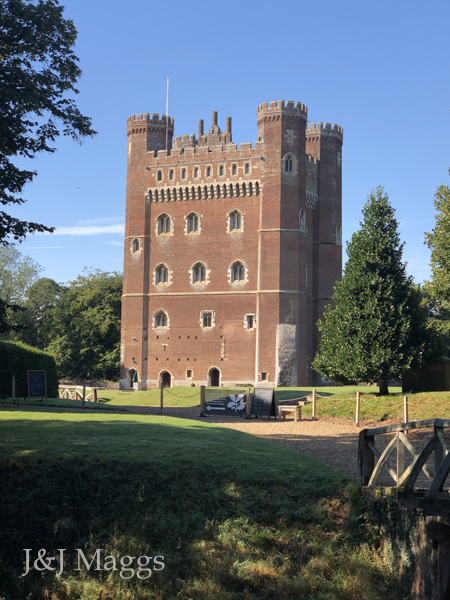
Day five began with a visit to Tattershall Castle, or all that remains of the great castle built here in the 15th century by Ralph, Lord Cromwell, Treasurer to Henry VI. The stone tower rises five storeys above the Lincolnshire fens and is visible from miles away. Its interior is essentially unfurnished, but a climb to the top rewards the viewer with magnificent views of the surrounding countryside. While it was a far cry from the stately homes which fill our days, Tattershall was a refreshing diversion and a stimulating climb, enjoyed immensely by this 83-year-old tourist.
~ ~ ~ ~ ~ ~ ~ ~ ~ ~ ~ ~ ~ ~ ~ ~ ~ ~ ~ ~ ~ ~ ~ ~ ~ ~ ~ ~ ~ ~ ~ ~ ~ ~ ~ ~ ~ ~ ~ ~
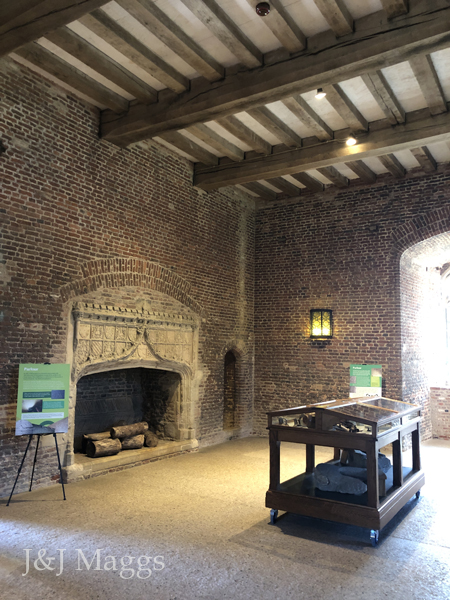
The great hall on the ground floor
~ ~ ~ ~ ~ ~ ~ ~ ~ ~ ~ ~ ~ ~ ~ ~ ~ ~ ~ ~ ~ ~ ~ ~ ~ ~ ~ ~ ~ ~ ~ ~ ~ ~ ~ ~ ~ ~ ~ ~
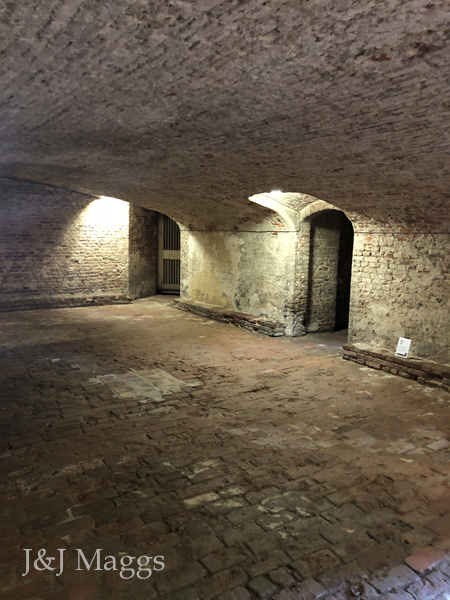
The crypt, below ground and the foundation for the massive structure.
~ ~ ~ ~ ~ ~ ~ ~ ~ ~ ~ ~ ~ ~ ~ ~ ~ ~ ~ ~ ~ ~ ~ ~ ~ ~ ~ ~ ~ ~ ~ ~ ~ ~ ~ ~ ~ ~ ~ ~
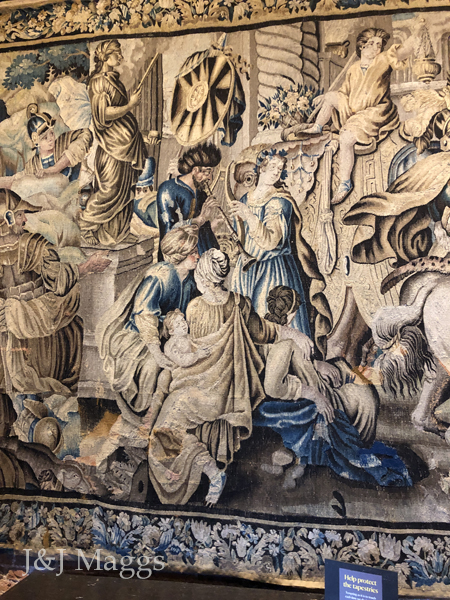
Part of the large tapestry that hangs on a wall on one of the upper storeys
~ ~ ~ ~ ~ ~ ~ ~ ~ ~ ~ ~ ~ ~ ~ ~ ~ ~ ~ ~ ~ ~ ~ ~ ~ ~ ~ ~ ~ ~ ~ ~ ~ ~ ~ ~ ~ ~ ~ ~

Spotted on a wall - this witty
anachronistic bit of graffiti
~ ~ ~ ~ ~ ~ ~ ~ ~ ~ ~ ~ ~ ~ ~ ~ ~ ~ ~ ~ ~ ~ ~ ~ ~ ~ ~ ~ ~ ~ ~ ~ ~ ~ ~ ~ ~ ~ ~ ~
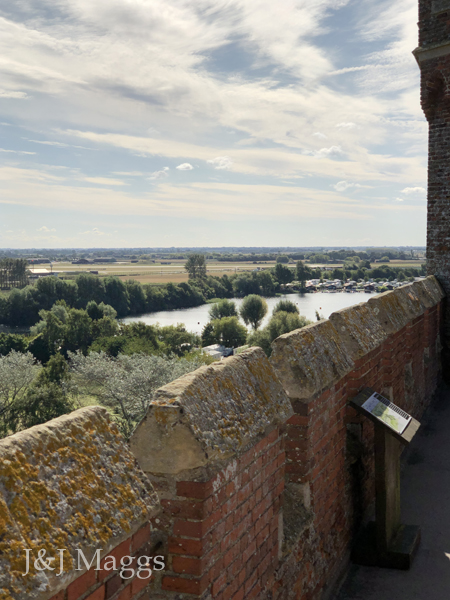
The view from the top
~ ~ ~ ~ ~ ~ ~ ~ ~ ~ ~ ~ ~ ~ ~ ~ ~ ~ ~ ~ ~ ~ ~ ~ ~ ~ ~ ~ ~ ~ ~ ~ ~ ~ ~ ~ ~ ~ ~ ~
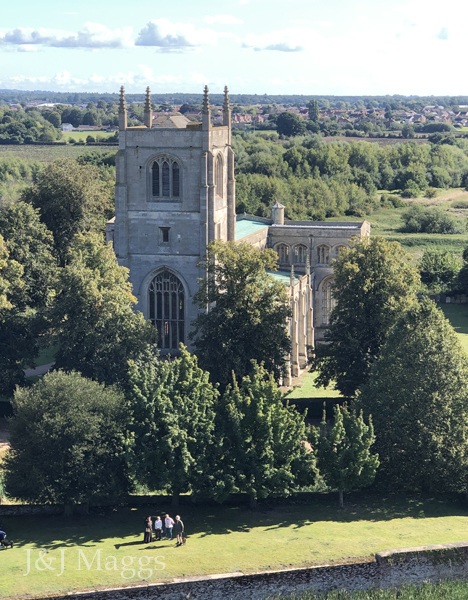
Another view from the roof, showing nearby Holy Trinity Collegiate Church, containing memorials to Cromwell and his wife, once owners of the castle
~ ~ ~ ~ ~ ~ ~ ~ ~ ~ ~ ~ ~ ~ ~ ~ ~ ~ ~ ~ ~ ~ ~ ~ ~ ~ ~ ~ ~ ~ ~ ~ ~ ~ ~ ~ ~ ~ ~ ~
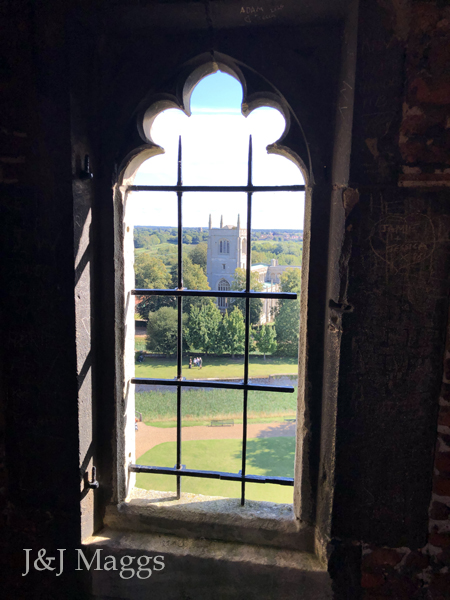
~ ~ ~ ~ ~ ~ ~ ~ ~ ~ ~ ~ ~ ~ ~ ~ ~ ~ ~ ~ ~ ~ ~ ~ ~ ~ ~ ~ ~ ~ ~ ~ ~ ~ ~ ~ ~ ~ ~ ~
From Tattershall, we drove south, hoping for
some ocean views as we drove to Great Yarmouth.

While we saw little of the coastline, we stopped here to photograph a pasture covered with hundreds of geese feasting on the remnants of the summer's harvest.
Elizabethan House in Great Yarmouth
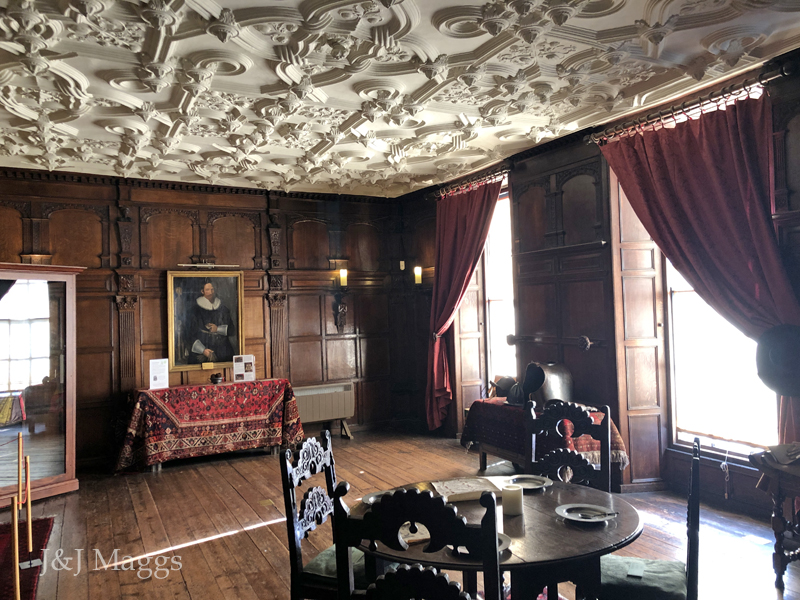
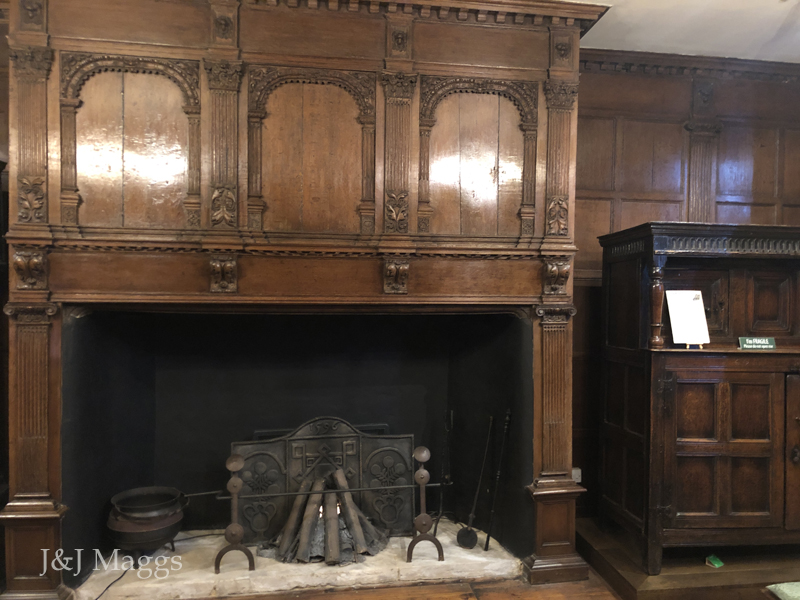
This handsomely panelled fireplace and wall
give a sense of the elegance of this early dwelling.
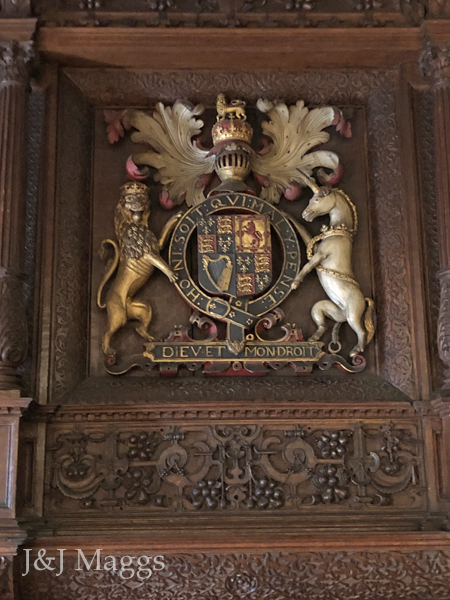
The Royal Coat of Arms, framed in sumptuous 17th-century paneling

We spotted this Lancashire chair in the dining room - a long way from home.

A large, charming diarama, illustrating what might have been here in Victorian times.
We left Great Yarmouth and drove to Acle, where we would spend the night.
On the morning of day 7, we took a short drive north to Blickling to visit one of the grandest homes of this trip - the Blickling Estate.
The Blickling Estate
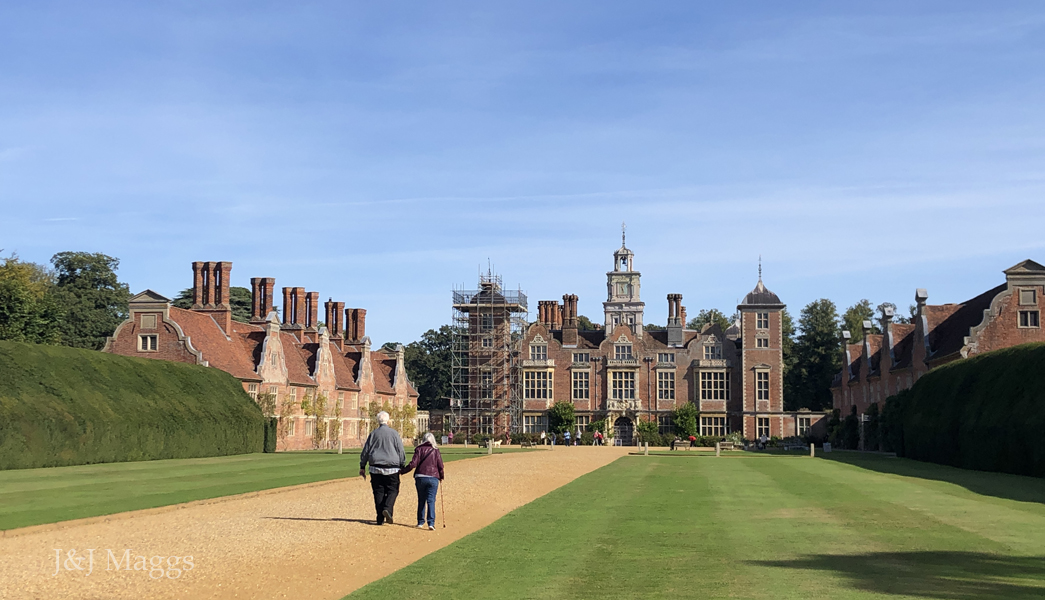
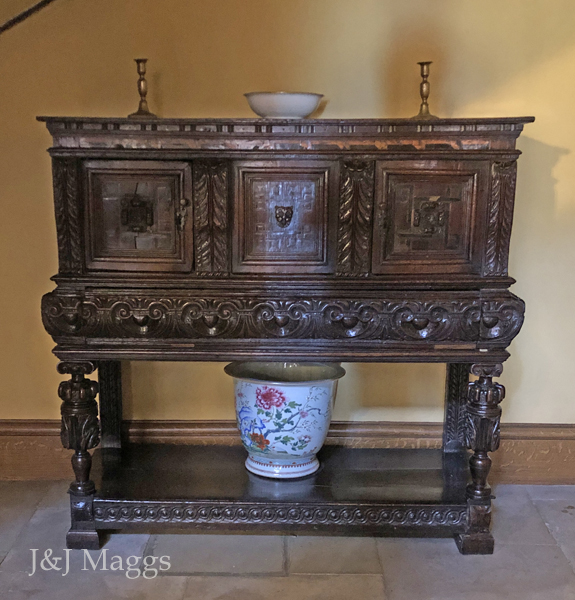
One of several oak cupboards in the house
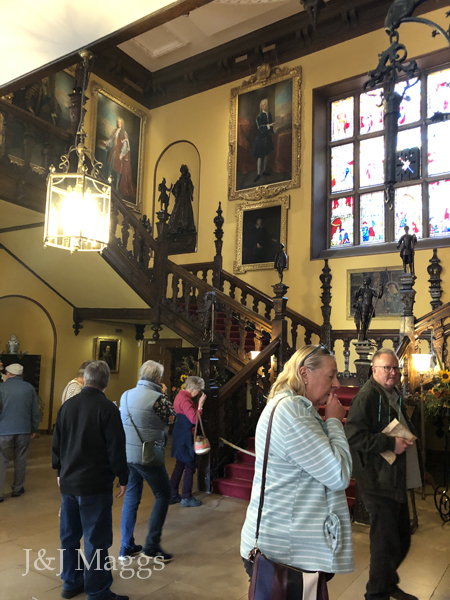
The stairway in the Great Hall
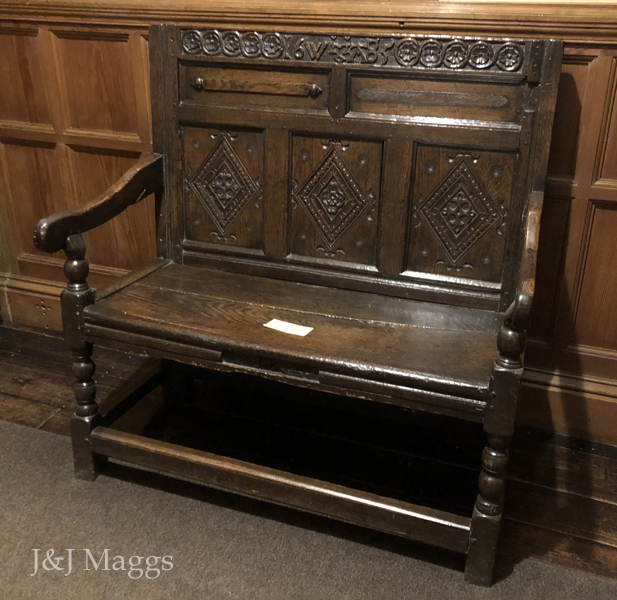
A small oak settle. We'd like to order three!
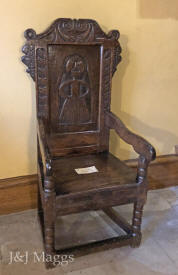
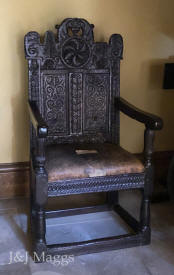
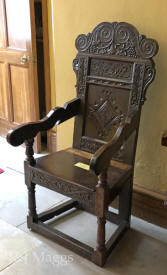
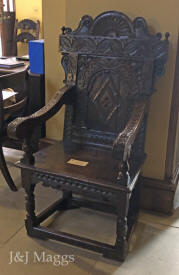
Four of the abundant armchairs scattered about the house
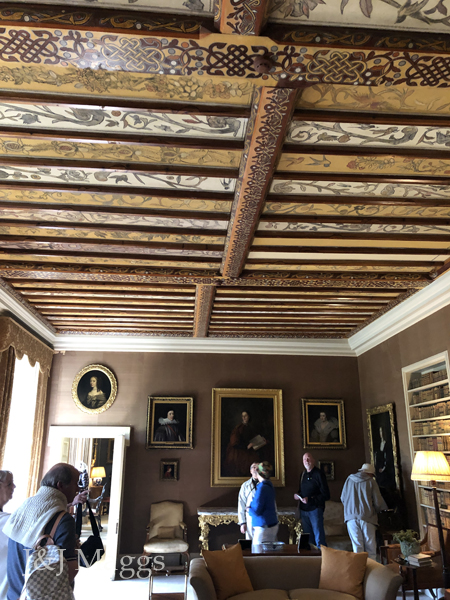
The elaborate ceiling in the Brown Drawing Room
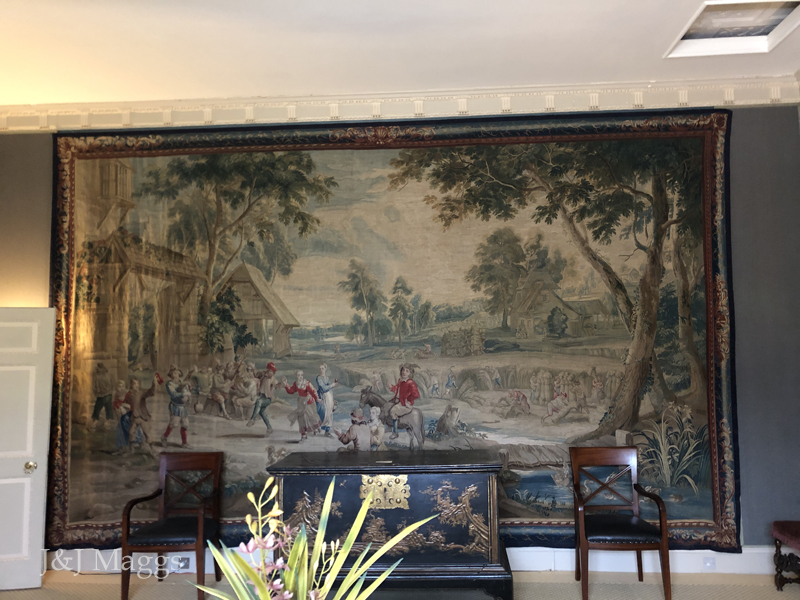
One of many early tapestries found throughout the public rooms of the house

The stairway to the first floor
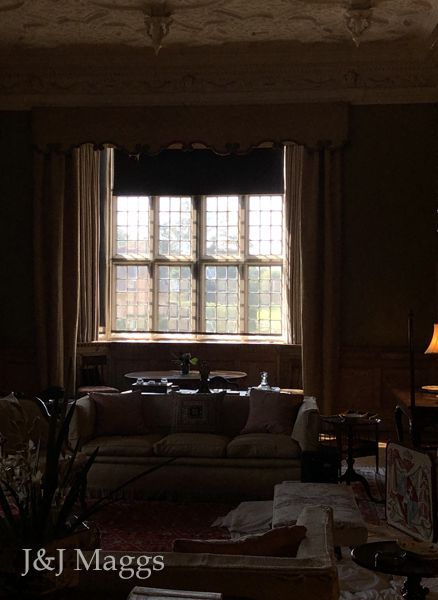

The long gallery - designed to impress, and it does.
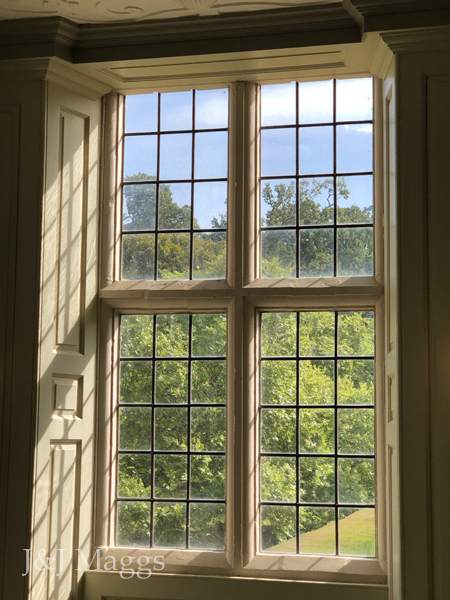
Holy Trinity Church, Blythburgh
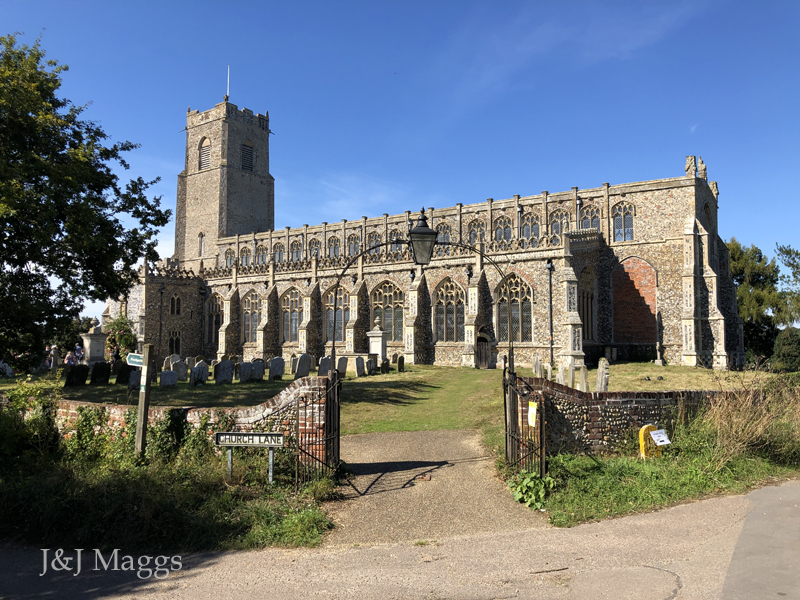
Our researches into possible destinations for our journey through East Anglia led us to this village church, still a thriving local parish and not a National Trust property. The renown of Holy Trinity Church stems largely from its grand ceiling, presided over by pairs of large, carved angels, and its pew ends adorned with carved oak figures, some representing the seven deadly sins.
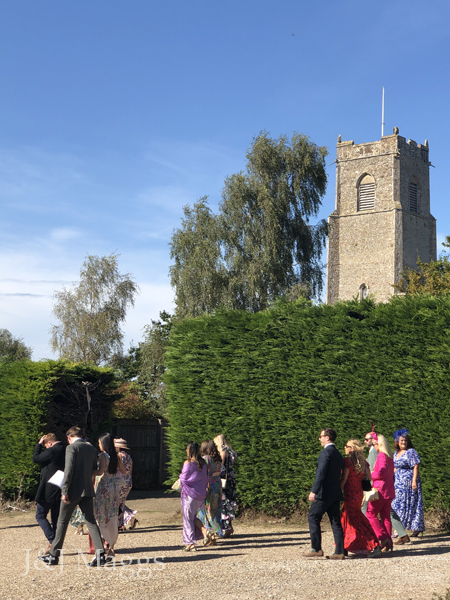
When we arrived in the car park, we were dismayed to see that a large crowd had assembled for the wedding that was to begin in the church in less than an hour. The wedding photographer, whom I ventured to quiz on the subject, estimated that the ceremony would last less than an hour, after which the wedding party and guests would move to another location.
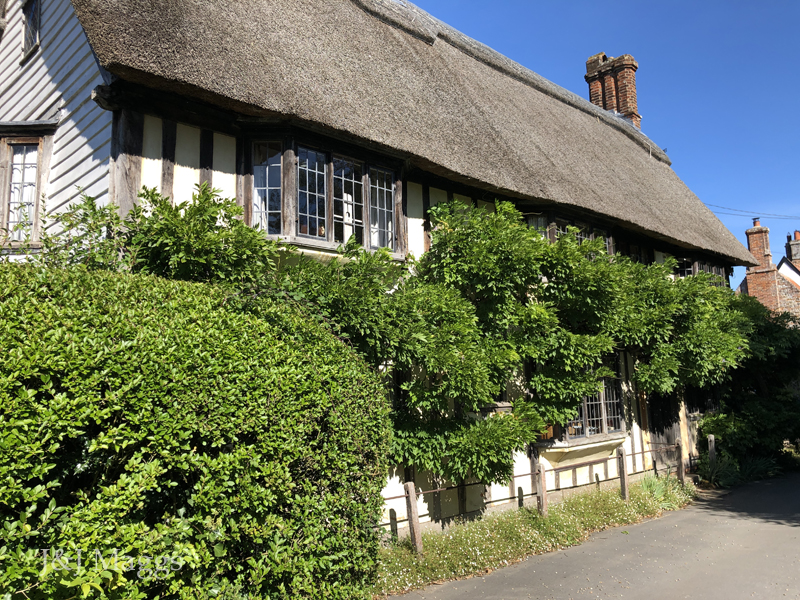
We decided to spend the hour exploring the village, walking through and photographing the adjoining street, upon which were the quite early priory and another house of comparable age, and the graveyard that filled the yard on two sides of the church. It was a most enjoyable hour.
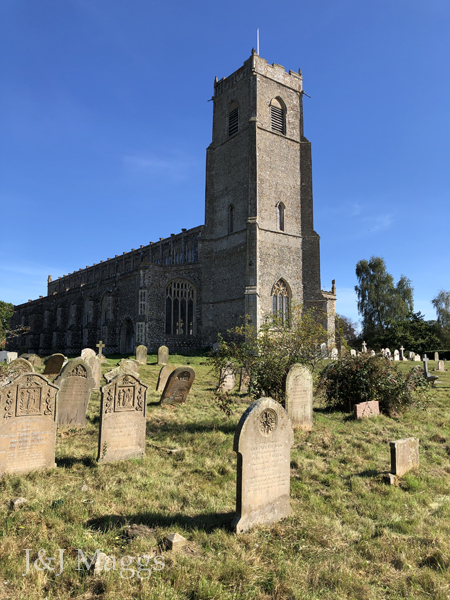
~ ~ ~ ~ ~ ~ ~ ~ ~ ~ ~ ~ ~ ~ ~ ~ ~ ~ ~ ~ ~ ~ ~ ~ ~ ~ ~ ~ ~ ~ ~ ~ ~ ~ ~ ~ ~ ~ ~ ~
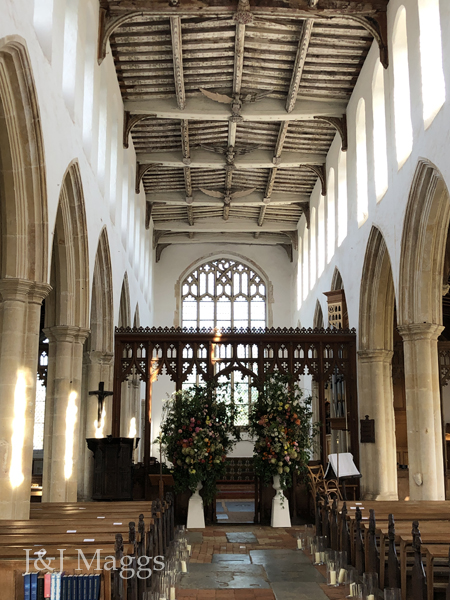
~ ~ ~ ~ ~ ~ ~ ~ ~ ~ ~ ~ ~ ~ ~ ~ ~ ~ ~ ~ ~ ~ ~ ~ ~ ~ ~ ~ ~ ~ ~ ~ ~ ~ ~ ~ ~ ~ ~ ~
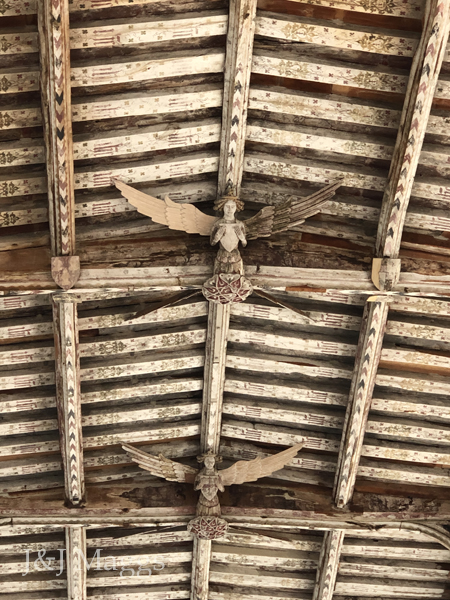
The spectacular ceiling of this village church
~ ~ ~ ~ ~ ~ ~ ~ ~ ~ ~ ~ ~ ~ ~ ~ ~ ~ ~ ~ ~ ~ ~ ~ ~ ~ ~ ~ ~ ~ ~ ~ ~ ~ ~ ~ ~ ~ ~ ~
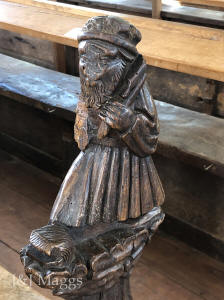
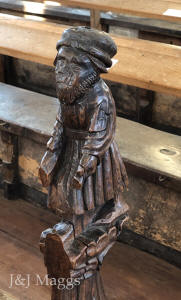
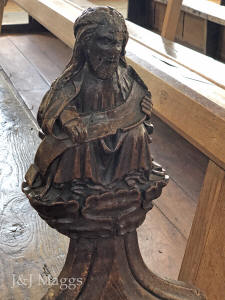
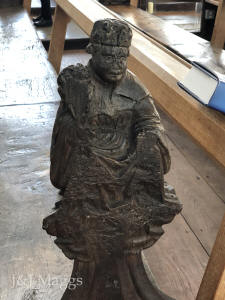
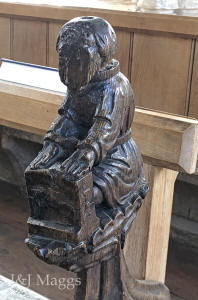
A few of the carved pew figures
~ ~ ~ ~ ~ ~ ~ ~ ~ ~ ~ ~ ~ ~ ~ ~ ~ ~ ~ ~ ~ ~ ~ ~ ~ ~ ~ ~ ~ ~ ~ ~ ~ ~ ~ ~ ~ ~ ~ ~
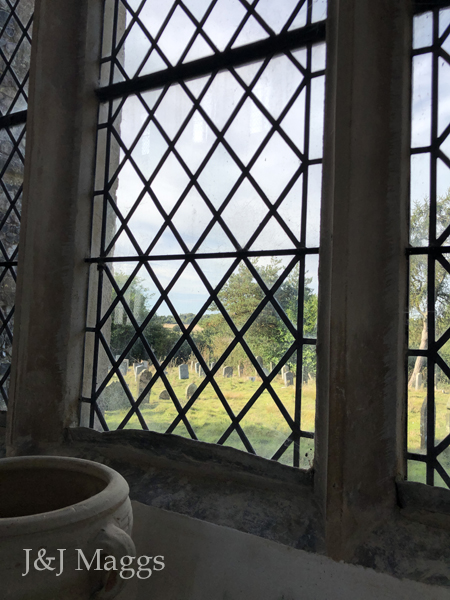
~ ~ ~ ~ ~ ~ ~ ~ ~ ~ ~ ~ ~ ~ ~ ~ ~ ~ ~ ~ ~ ~ ~ ~ ~ ~ ~ ~ ~ ~ ~ ~ ~ ~ ~ ~ ~ ~ ~ ~
We left Blythburgh for our hotel in Stowmarket, which would be our base for exploring some of England's most highly regarded early buildings.
~ ~ ~ ~ ~ ~ ~ ~ ~ ~ ~ ~ ~ ~ ~ ~ ~ ~ ~ ~ ~ ~ ~ ~ ~ ~ ~ ~ ~ ~ ~ ~ ~ ~ ~ ~ ~ ~ ~ ~
In next month's Newsletter: Part IV. Anglesey, Lavenham, and more
~ ~ ~ ~ ~ ~ ~ ~ ~ ~ ~ ~ ~ ~ ~ ~ ~ ~ ~ ~ ~ ~ ~ ~ ~ ~ ~ ~ ~ ~ ~ ~ ~ ~ ~ ~ ~ ~ ~ ~
Click HERE to visit the J&J Maggs Antiques home page.